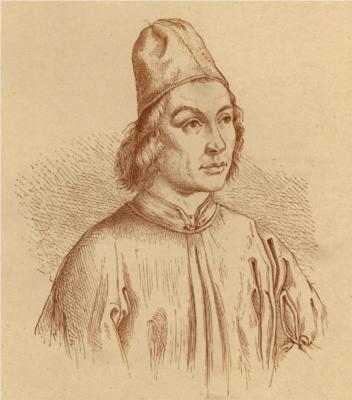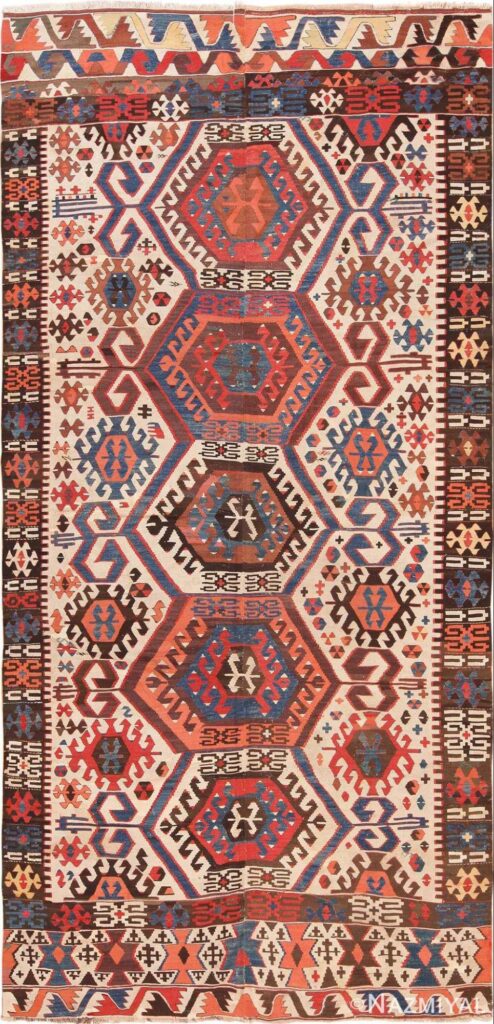Konya Rugs

Konya was known in classical antiquity and during the medieval period as Ikónion and Kónio in Greek and as Iconium in Latin. Muslims call her Qunia which is written in modern Turkish alphabet as “Konya”.

Konya reached the height of its wealth and influence in the second half of the 12th century as the capital of the flourishing Sultanate of Rum. Many Persians and Persianized Turks from Persia and Central Asia migrated to Anatolian cities either to flee the invading Mongols or to benefit from the opportunities for educated Muslims in a newly established kingdom.
Seljuk sultans of Rum were, too, Persianized Turks from central Asia. Several monarchs of the dynasty were named Kayqubad, Kaykavus and kaykhusraw after the Iranian mythological kings in Firdausi’s “Shahnama” the Persian book of Kings.
Kayqubad I’s reign represented the apogee of Seljuk power and influence in Anatolia, and Kayqubad himself was considered the most illustrious sultan of the dynasty. He was a great patron of art and poetry.
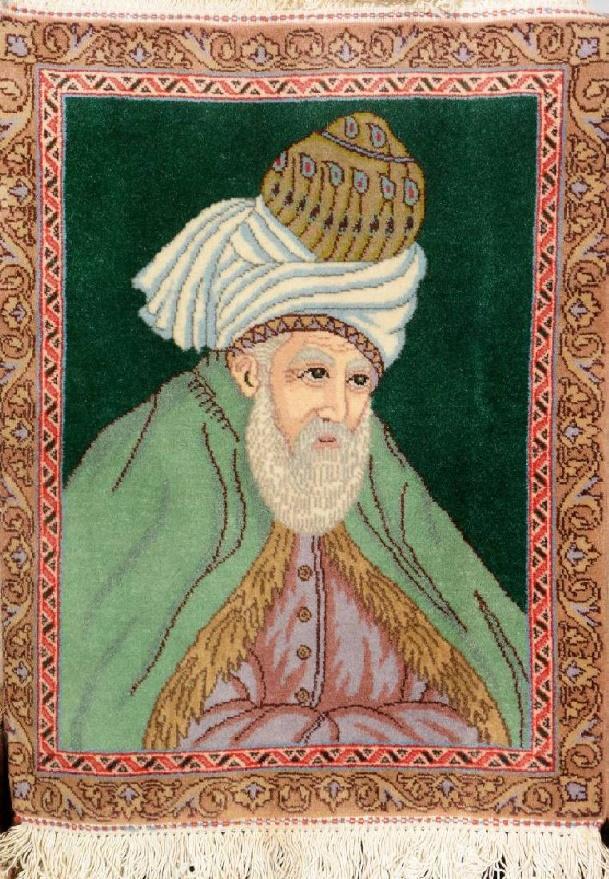
He patronized another star in the Persian poetry: Mevlevi (also known as Rumi). His father was invited to the Sultanate of Rum as a Sufi and scholar. They established an order in Konya which since then the city became famous for. Today the dance of Sama attributed to this order is a symbol of Konya and Turkey’s cultural heritage. In 2008, UNESCO confirmed the “Mevlevi Sama Ceremony” of Turkey as one of the Masterpieces of the Oral and Intangible Heritage of Humanity.
The earliest surviving Anatolian carpets were found in Konya, dated to the 13th century, the same time Rumi was working on his masterpiece Masnavi (Mathnavi). Kayqubad I built many mosques and palaces in his realm. Floors of such buildings are normally
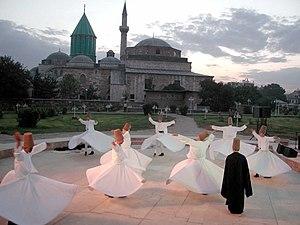
covered by magnificent carpets. If the number of mosques and palaces increase, carpet weaving would flourish subsequently.
The pieces found in Aladdin Mosque are some of the oldest rugs survived the time. Aladdin Kayqubad Mosque is the principal monument on the citadel of Konya. The building served as the “Mosque of the Throne” for the Sultans and contains the dynastic mausoleum. Designs in some of these carpets suggest Turkmen and Central Asian origins or influences. Being big-sized and accurate in weave and design, these carpets probably woven in city workshops related to the court.
Rugs and kilims of Konya and surrounding area (towns like Lâdik, Keçimusta, and Obruk) kept their Central Asian Turkic soul during centuries. Straight lines and pointy geometric shapes animated with vivid contrasting colors, all benefited from lustrous wool of the area and high quality dyes.
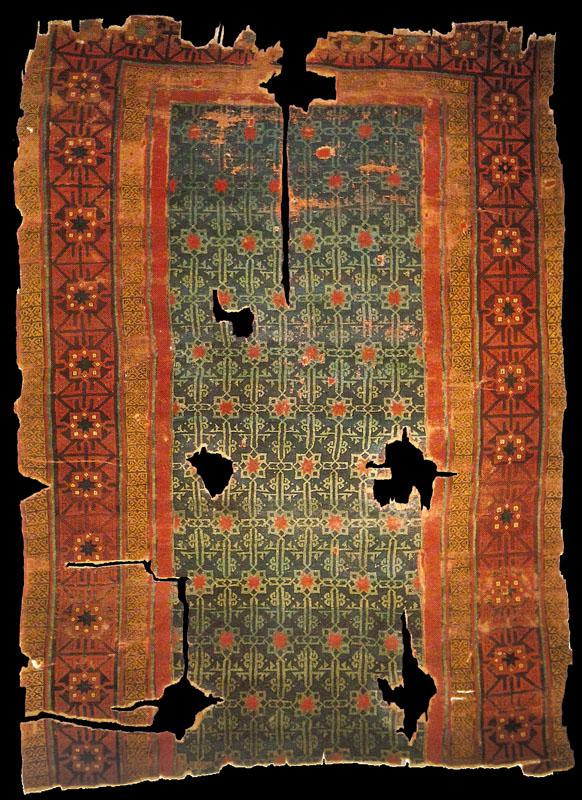






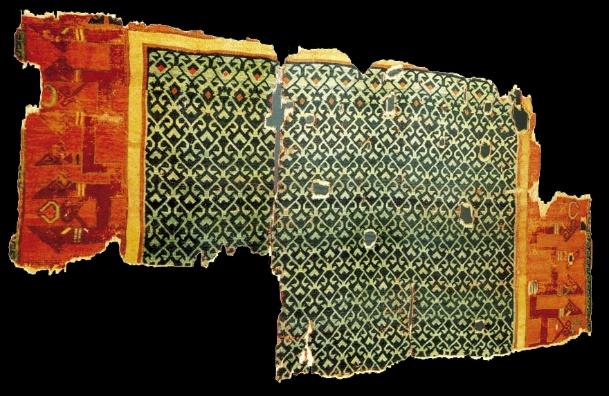
Technical aspects and the structure of Konya Rugs

The area’s wool considered the best in Anatolia, silky and lustrous. Knots are symmetric.
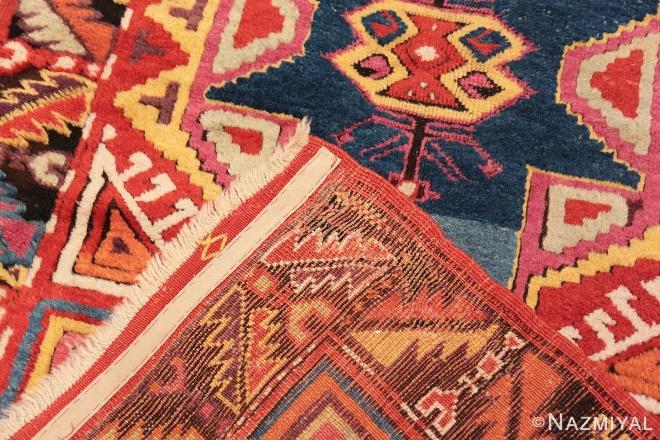
Rug and runner sizes are common among tribal pieces gathered ultimately in Konya. Kilims, too, would be found in both sizes. Konya’s kilims are slit-tapestry woven and in two pieces. The soumak structure may be used to outline some designs.

There is a special type of long-piled weavings in Kona proper for sleeping. Called Tülü (Turkish for “long haired”), these comfy rugs have a very long cut pile or looped pile, found in mat and pillow sizes.
Dyeing and painting of Konya Rugs

Tribal pieces of the area (known also as Yuruks) enjoy an energetic palette of shining yellows combined with deep brownish red and azure.
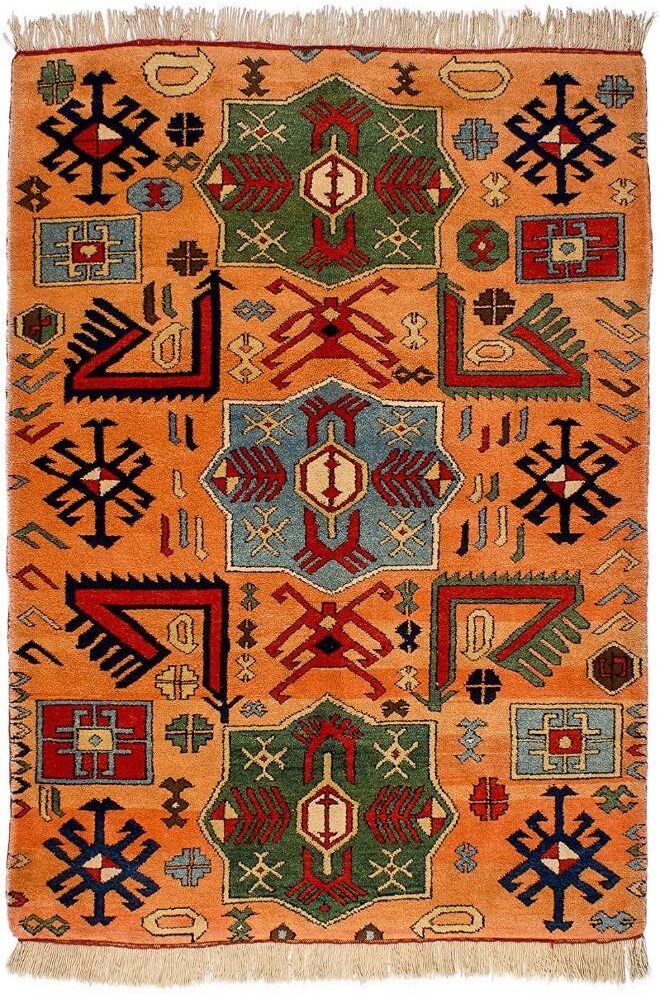
Earth tones, such as brown, green, mustard, are frequent on Konya’s antique Palette. Contemporary prayer rugs have red grounds. Vivid coloring matches perfectly with the lustrous silky wool of the area.
Kilim fields in konya consisted chiefly of columns of brightly colored hexagons on white grounds.
Designs and patterns of the Konya Rugs

Konya designs remained purely geometric with strict lines and shapes brought to life with vivid colors.
Prayer rug and all-over design with Memling Gul are common. The latter is characterized by several lines coming off the motifs that end in “hooks”, by coiling in on themselves through two or three 90° turns. Such motif or “Gul” has been named after the German painter Hans Memling who depicted carpets with such patterns in his artworks.
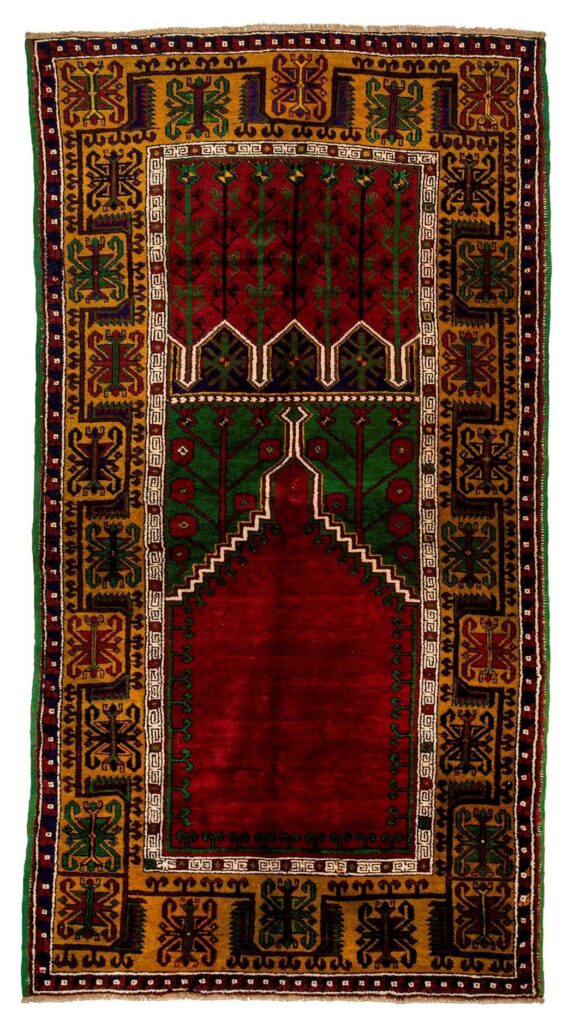
Konya prayer rugs have wide borders. There’s a type of niche structure common in Konya, in which the niche or the double niches were adorned by tulip patterns.
Runners and kilims are designed with pole medallion structure. Tülü sleeping rugs have simple geometric patterns.
